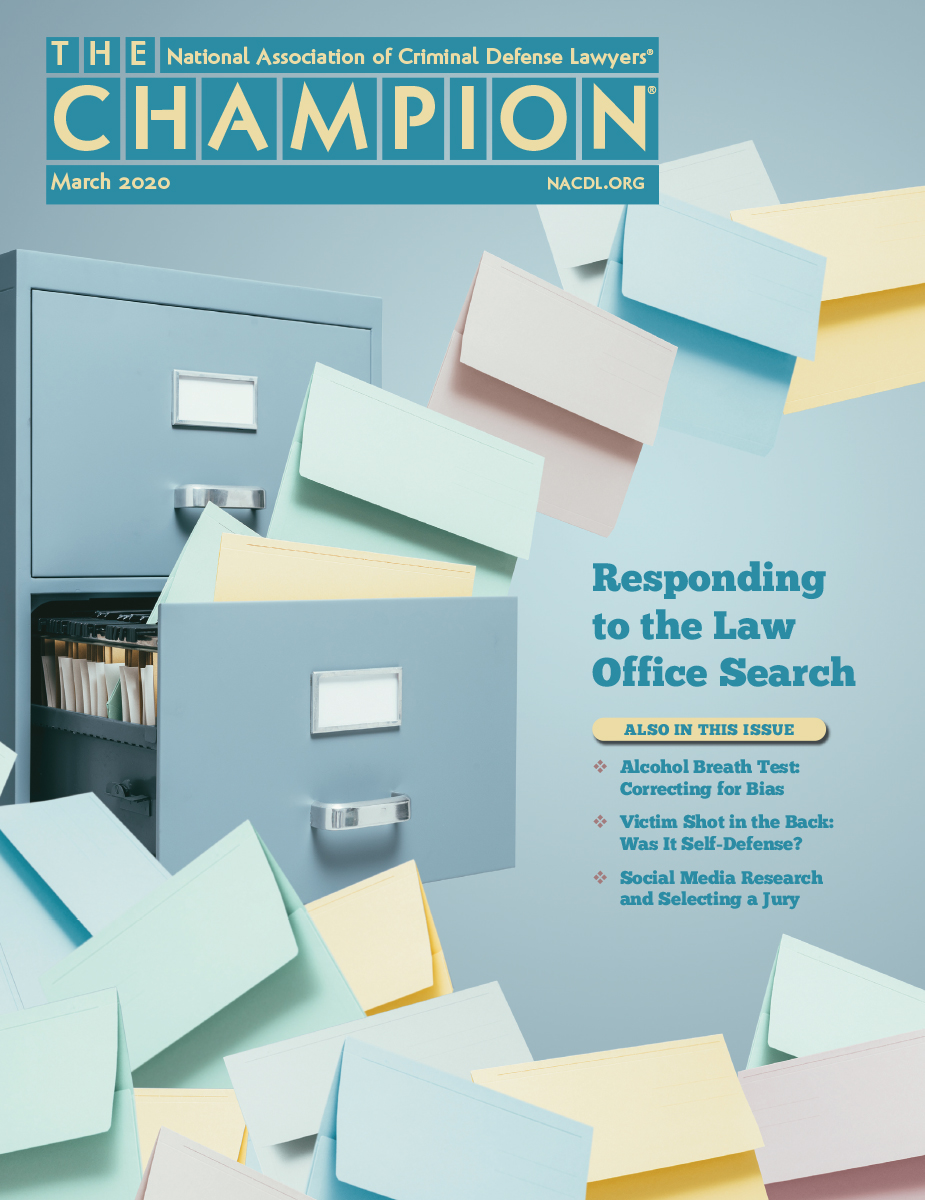March 2020

What should attorneys do when faced with the government’s subpoena and seizure of client files?
Articles in this Issue
-
A Road Map for Lawyers and Law Firms Responding to Searches, Seizures, and Subpoenas of Client Files
Defense attorney Elliot Abrams discusses a Fourth Circuit case that rejects the use of filter or taint teams after a law office search. He uses this case to develop a road map for lawyers to follow to protect client confidences in response to subpoenas or seizures of client files by the government.
-
Affiliate News
What events are NACDL affiliates hosting this month? Find out here.
-
Alcohol Breath Test: Correcting for Bias
The alcohol breath test causes two types of bias, writes professors Michael P. Hlastala and Joseph C. Anderson. They propose two changes to eliminate the bias.
-
Comprehensive NACDL Statement on Attacks on the Judiciary and the Judicial Process
Criminal defense lawyers defend the accused, but they also must safeguard the independence of the judiciary.
-
From the President: The Death Penalty: Who Lives, Who Dies?
The imposition of the death penalty is on the decline. However, 40 execution dates have been scheduled by seven states and the federal government for 2020.
-
Inside NACDL: NACDL’s Midwinter Infusion of New Talent
The success of NACDL’s work depends on the organization’s ability to field a first-rate team. NACDL recently elected two new board members and filled several staff positions.
-
NACDL News: California Innocence Project Co-Founder Justin Brooks Receives Champion of Justice Award
NACDL News for March 2020
-
Remembering John Cleary: NACDL’s First Public Defense Board Member
Chuck Sevilla shares memories of John Cleary, NACDL’s first public defense board member.
-
Shots in the Back — Are They ‘Legal’?: An Explanation for Self-Defense
A man breaks into a house. The homeowner shoots the intruder in the back, killing him. The state charges the homeowner with homicide, and the homeowner claims self-defense. Is it possible that the homeowner used lethal force justifiably even though the fatal entrance wound was in the back?
-
Social Media Research — A ‘Must’ When Selecting a Jury
It is not a good idea for a lawyer to ignore online information about anyone involved in a case. Social media research can provide lawyers with a truer sense of a prospective juror than the information the juror discloses on a written juror questionnaire or in open court.
